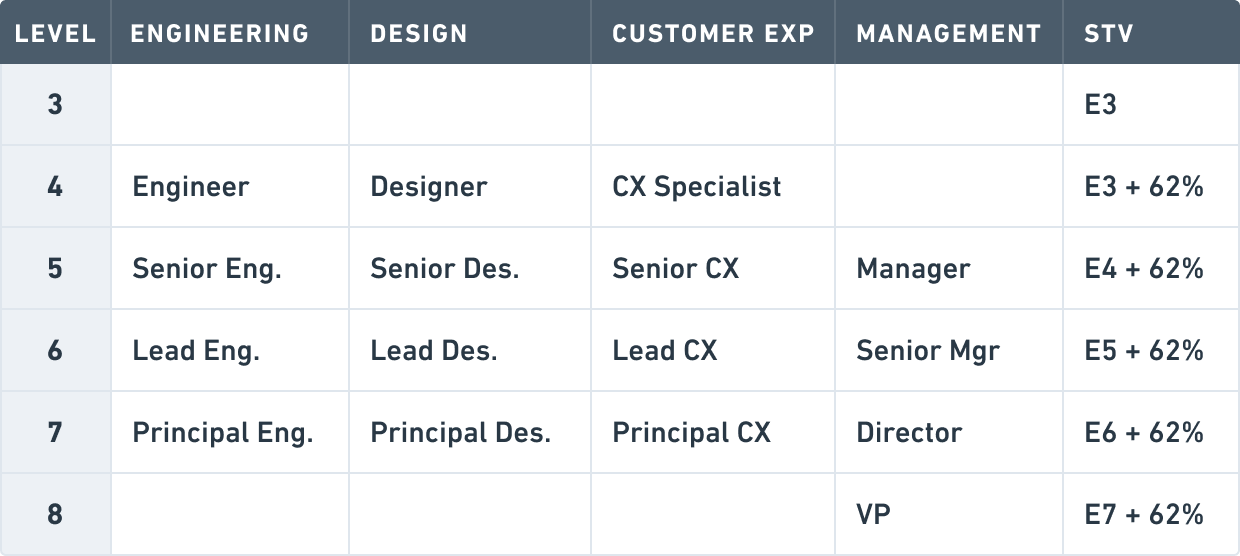Whimsical guide to compensation

Compensation is one of the trickiest things in business to get right.
At Whimsical, we follow a principle that everybody contributing to the business should be treated equitably, no matter when they started, where they live, or where they come from.
We achieve this through two things:
- Full transparency. All salaries, equity, companies financials and so on are visible to everybody in the company.
- A compensation framework that's simple, consistent, and universally adhered to—without exceptions.
We introduced the framework from the very early days and have been fine-tuning it ever since. Here's what we have come up with so far.
Pay
Our principles for pay are:
Salaries are 100% based on merit. Everybody doing the same job at the same level is paid the same, independent of location etc.
We don't negotiate salaries but we are upfront about what we will pay. This is the only way to ensure (1).
We want to keep the compensation framework simple yet flexible enough for future growth.
To start with, we have 9 distinct levels, each associated with a specific salary and mapped to every role we have at the moment. Increases between each level are the same—exactly 25%. This is what it looks like:

Our salaries are even across the roles. For example, a senior customer experience specialist will make the same as senior software engineer. If two people have a similar amount of experience and capabilities in different roles, they are compensated equally, no matter if one produces code while other ensures a delightful customer experience.
To calculate the actual salary numbers, we start by collecting the top 10% of market rates globally for each role. Then we adjust the baseline number (S1) to ensure that every box in the framework is at or above the market rate.
We recalibrate the framework once a year, again by looking at the market rates and readjusting the baseline number if any of the roles have fallen below (but we never decrease it). This way, the raises happen automatically and there are no awkward negotiations.
Benefits
We think of benefits as something you cannot buy with money. And there's really just one thing like that—time. That's why we offer:
- 6 weeks of annual paid time off
- 4 weeks of paid parental leave (this is for countries where the government doesn't take care of it)
One exception to this is health insurance. Most countries have universal healthcare, except the US, where we fully cover the premium for employees and their dependents.
Equity
I hold the view that the binary distinction between founders and employees doesn't make much sense. It's more of a gradient and we wanted it to be reflected accordingly in the equity.
The equity framework starts with the internal valuation, for which we use a simple formula—annual recurring revenue times five.
The other input is what we call stock target value (STV), which is the target value of issued equity in cash. It is based on the level, similarly to salary:

The baseline level E3 is approximately the same as the level 3 salary (S3).
The complete formula then is as follows:
valuation = ARR x 5
share price = valuation / number of fully diluted shares (this is all currently issued shares and options, independent of vesting)
shares to offer = stock target value / share price
It's hard to get good data on this but from what we can tell, the resulting equity is a magnitude higher than the industry standard. What's more important is that we ended up with a relatively smooth equity curve from founders to early employees to later employees.
To be fair, it's not exactly apples to apples. Because a long term approach to everything is core to Whimsical's philosophy, our vesting period for shares is 8 years. That is twice as long as the industry standard 4 years.
So that's the story so far.
If you are just getting started with your own business, I hope this may serve as a useful data point.
If you are someone looking for new challenges, perhaps check out our jobs page.



